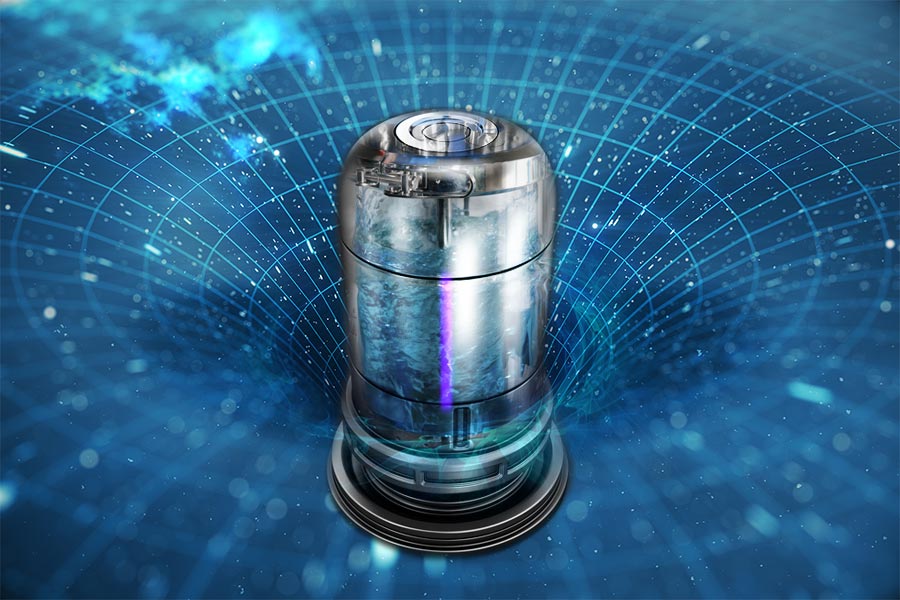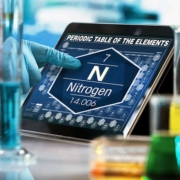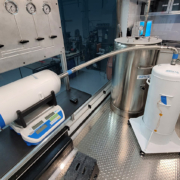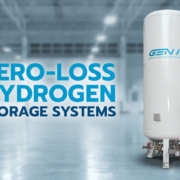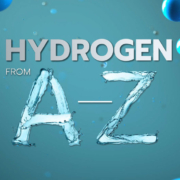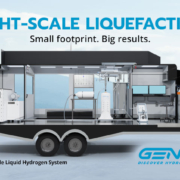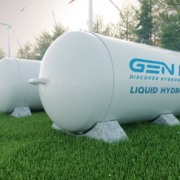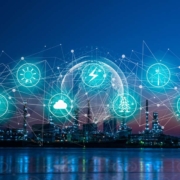Hydrogen A to Z Series: L For Liquefaction
By: GenH2 Staff
Read Time: 4 minutes
Defining the Hydrogen Economy from A to Z: L is for Liquefaction
Continuing the defining hydrogen from A to Z series, we are focusing on L for Liquefaction and reminding ourselves again and again about Liquid Hydrogen, the core of GenH2 infrastructure solutions. Liquefaction is the process that has to be carried out to get from gaseous hydrogen to liquid hydrogen.
What is the primary reason for liquefaction? Energy density is the motivation for making liquid hydrogen. Although there are many additional benefits, energy density remains the main reason for liquefaction. Hydrogen is emerging as one of the most promising energy carriers for a global cleaner energy system and specifically Liquid Hydrogen, which is the answer for the global challenge of storing renewable energy. The transportation and storage of hydrogen are critical to its large-scale adoption, implementation and the liquefaction of hydrogen stands out as the only viable energy carrier at-scale and the ultimate pathway for storing vast amounts of renewable energy. ln that adoption and implementation, the liquefaction and storage processes must also be safe and efficient.
What is liquefaction? The general term of liquefaction is the process of making or becoming liquid. Cryogenic liquefaction is the process of turning a gaseous species at atmospheric conditions into a liquid at atmospheric pressure but at cryogenic temperature. Specifically gaseous hydrogen is liquefied by cooling it to below 20.2 K, −253°C (−423°F).
Hydrogen is a permanent gas and like mentioned previously can only be liquefied at low temperature and not only by compression. Through cryogenic cooling and liquefier, the volume of hydrogen is reduced by 1/848 leading to liquid hydrogen. Hydrogen liquefaction is considered an established technology, although improvements still continue especially in the storage of it, as with GenH2’s controlled storage process and the reduction of energy consumption for the process.
Liquefaction is a lot like refrigeration, except it happens in an open system. This means that you add a gas, and capture and store the liquid externally. Thermodynamically, a refrigeration cycle and a liquefaction cycle are the same. Some of the popular fluids only become liquid at cryogenic temperatures, and so we use these refrigeration cycles to liquefy these gases. Oxygen, Nitrogen, Hydrogen and Helium only become liquid at 90, 77, 20 and 4 kelvin respectively.
Refrigeration systems have an associated efficiency, which we compare to the theoretical ideal refrigeration cycle: the Carnot Cycle. The Carnot cycle was named after French engineer Carnot who described the ideal cycle being that the work done on the system, for example by the compressor, should be the heat removed by the system. Naturally, this is impossible to achieve in a real system, especially at low temperatures. However, the efficiency of refrigeration systems is usually measured by the Carnot or the coefficient of performance (COP).
Any liquefaction process involves compressing and expanding the gas. By compressing the gas and rejecting the heat that results from that step, you can then expand the gas (in a thermally isolated environment) to reduce the temperature and liquefy the gas; this is either done by the high-pressure gas expanding through a valve (isenthalpic expansion) or through a work-producing expander (isentropic expansion). The heat exchangers used in a refrigeration cycle tend to define the type of thermodynamic cycle. There are two main types of heat exchangers, Recuperative and Regenerative. Recuperative cycles include Brayton, Claude, and Joule-Thompson. Regenerative cycles include Gifford-McMahon, Stirling and Vuilleumier.
In real systems, the distinction is not so cut and dry as refrigeration cycles can use a combination of turbo-expanders and JT valves, and even multiple fluids in a cascade system. Hybrid systems use the JT valve at the last step (coldest step) for expansion while using turbo expanders elsewhere in the cycle. The type of liquefaction cycle used is determined by the production rate required. Lab-scale liquid hydrogen production could use the Linde-Hampson system with Liquid nitrogen precool, or cryocooler based approach. Small to medium production scale could use Brayton or Claude cycles, with or without liquid nitrogen precool. Large-scale production is usually by a Claude cycle approach. At GenH2, our focus is small-scale industrial from 10 kg/day up to 5000 kg/day. Please look for next week’s subjects on Modular and Methane.
